Bahariya Oasis, 370 km from Cairo, is a hidden gem in Egypt’s Western Desert that blends natural wonders, ancient history, and cultural richness. Known historically as “Deses” and “Parva,” the oasis showcases dramatic sites like the White and Black Deserts, historic landmarks including the Golden Mummies Museum and Ain El Muftella Temple, and relaxing hot springs like Bir Sigam. With its mix of archaeological depth and desert serenity, Bahariya stands out as a top destination for history buffs and adventure seekers in 2025.
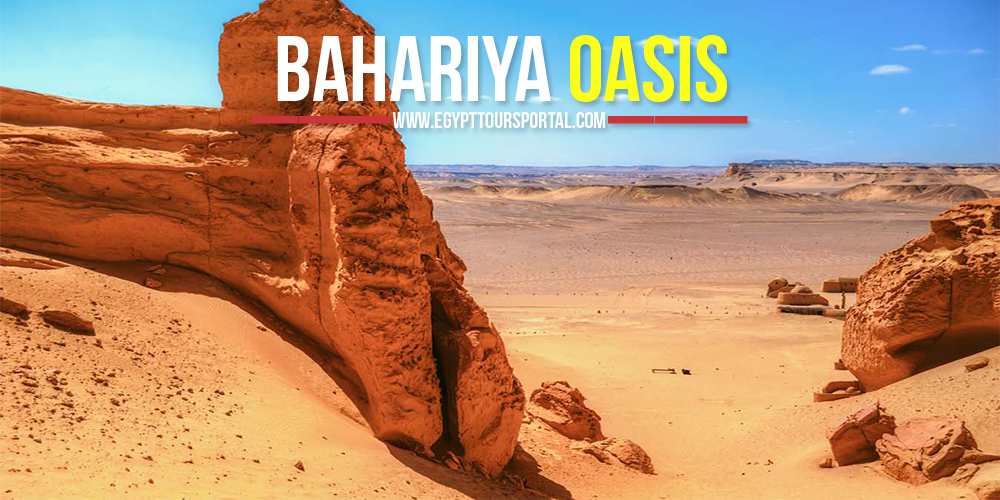
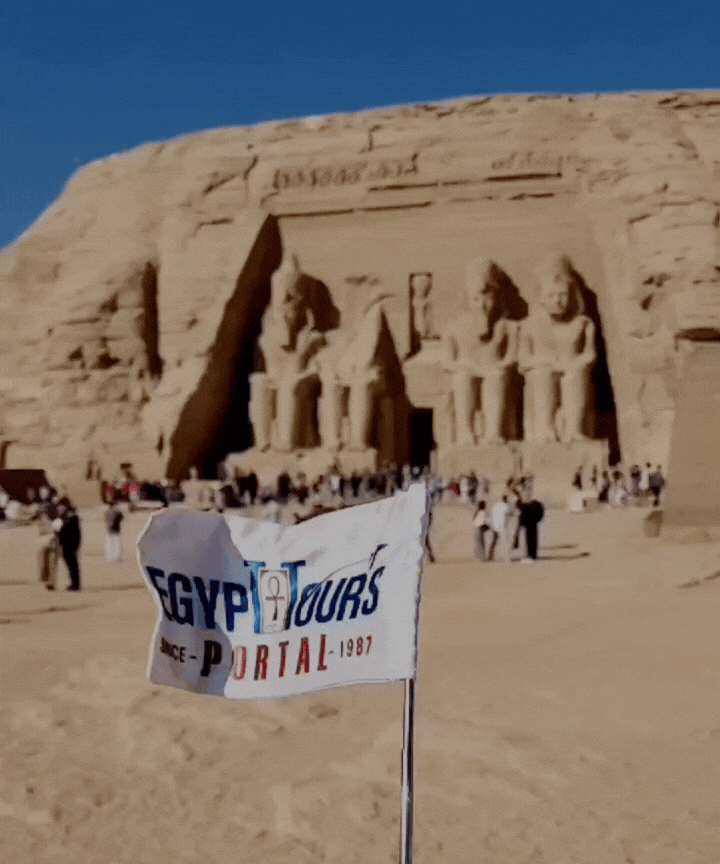
Bahariya Oasis is a natural habitat filled with natural treasures and celestial wonders from the early days of creation and civilization. The goal of this article is to showcase all the information, details, and facts about the Bahariya Oasis. This article was written by a group of very skilled team of Tour operators, tour guides, scholars, and travel consultants on how to know all the details about the magical Bahariya Oasis.
Out of the lifeless, harsh nature of the western desert of Egypt rose the Bahariya Oasis, which is one of the most genuinely mesmerizing destinations in all of Egypt. The oasis is incredibly beautiful and also holds an important historical significance with roots deep into ancient Egyptian civilization. The oasis has also been a treasure trove of some of the most important archaeological finds in modern times.
The name Bahariya is derived from the Arabic word Bahar, which means sea, referring to the Mediterranean Sea to the northern lands of Egypt in ancient times. The ancient Egyptians called it "Deses," while the Romans named it Parva, our little oasis.

The Bahariya Oasis is 370 km north of the capital Cairo, it is 94 km long and 40 km wide, and covers an area of 2000 km². In the heart of the oasis is the capital, Bawiti. The Oasis is surrounded by various number of huge mountains like Ghurabi, Maghrafa, and Dist, and tourism and iron ore mining are the main economic sectors.
Life can find the way as it produces agricultural products like guavas, mangos, olives, and dates. In the northernmost point of the oasis, in the small lake of Al Martin. There are also several natural hot springs in the north of the oasis. The Oasis holds a museum that contains a number of native artworks. It contains some massive mountains like Gebel Maghrafa, Gebel Ghurabi, and Gebel Dist, also known as the English Mountain.
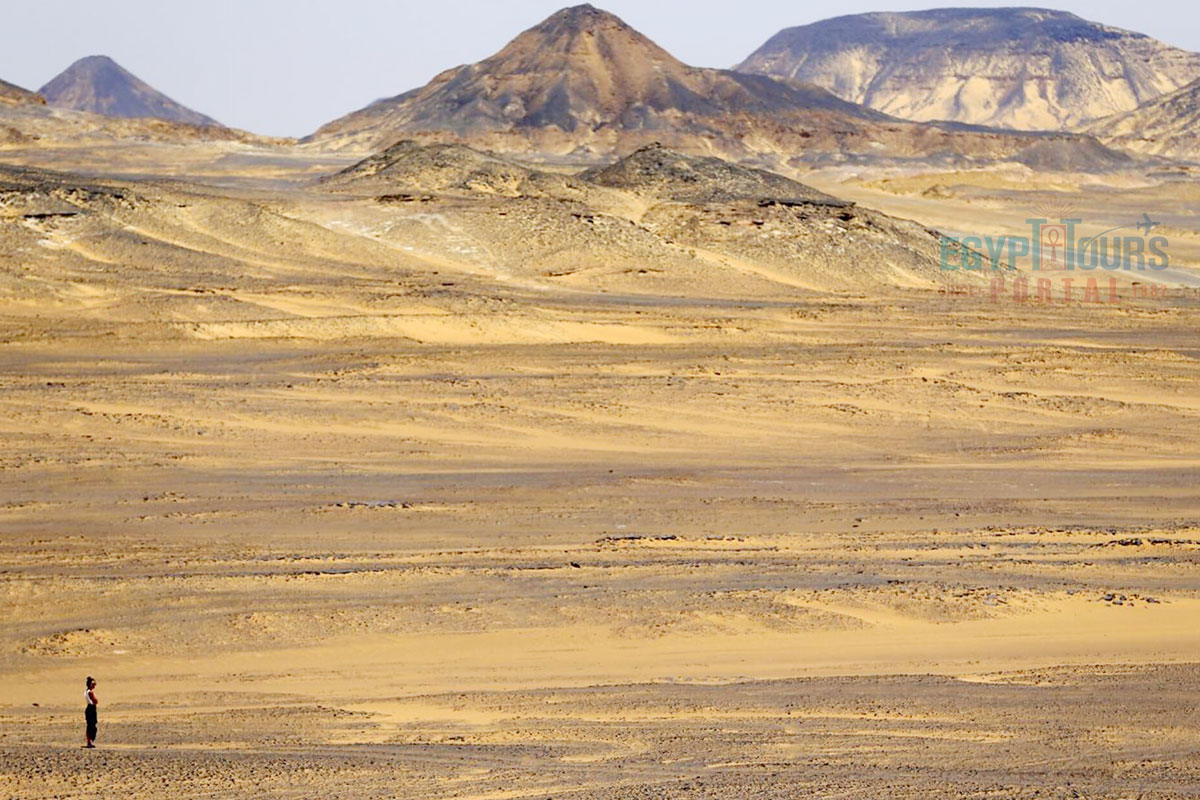
The name Bahariya was known to be derived from the word "Bahr", which means in Arabic the "Sea".The word refers to the Mediterranean Sea and the Northern lands of Egypt in ancient times. The Pharos named the Bahareya Oasis "Desdes," while the Romans named Bahariya "Parva," or the little oasis.
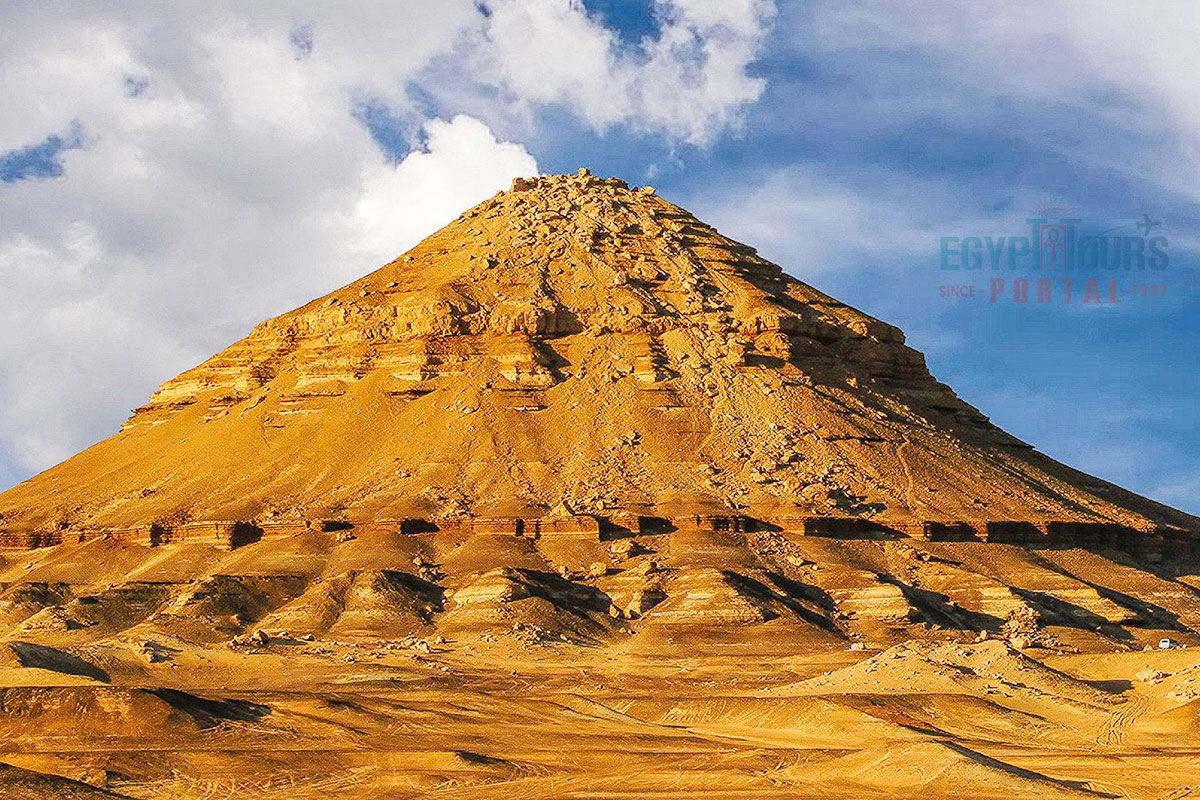
The Bahareya Oasis is known to be the home of more than thirty thousand people who primarily live in the four main towns of the oasis, which include Bawiti, the capital and the center point of the Bahareya Oasis, Al Qaser, which is the ancient village in the Bahareya Oasis, Mandisha, and Zabw.
The area between the towns of Bawiti and Al Qaser contains a number of mountains with many ancient necropolises, like the Necropolis of Qarat Subi and the Abis necropolis of Qarat Feragi.
The Bahariya Oasis has many hot springs, like Ain Bishmu, which dates back to Roman times, Bir Al Nebag, which is located in Bawiti, and Bir Matar, which is located further to the North. At the Northernmost point of the Bahareya Oasis, is the small lake of Al Marun, surrounded by spots filled with many rare birds.
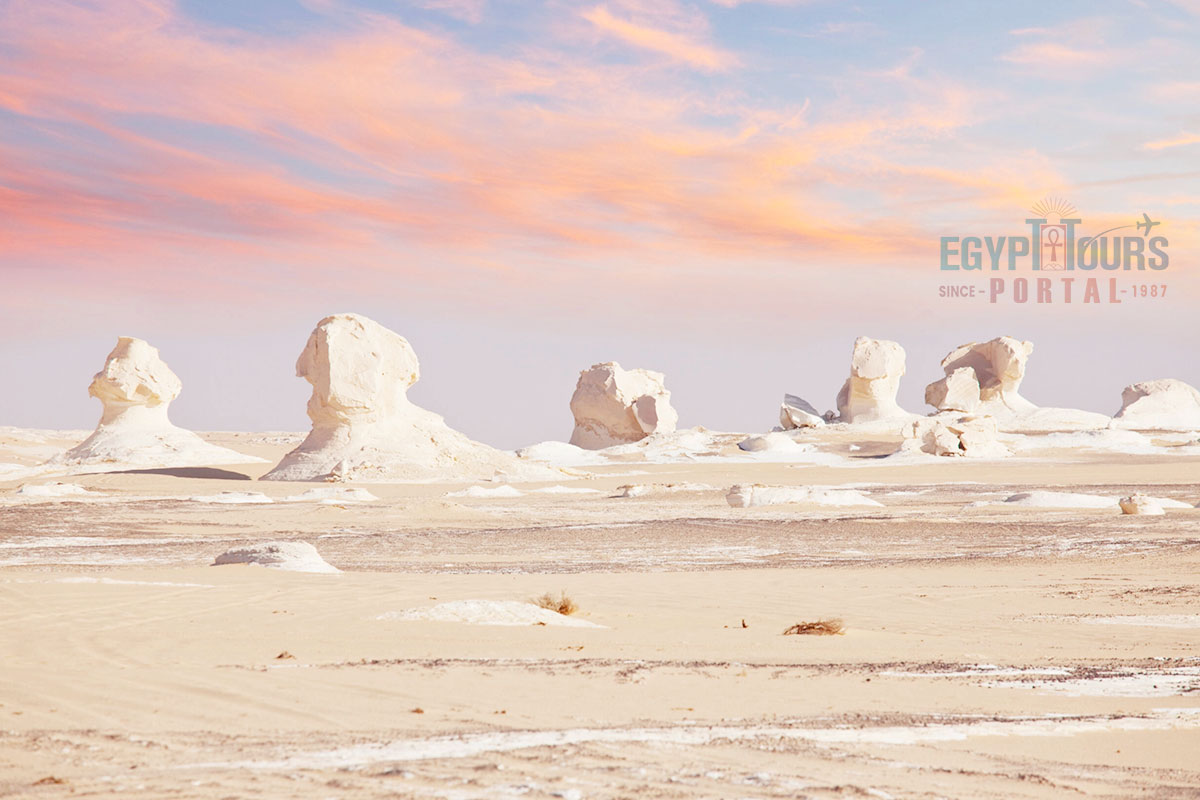
Since Bahariya Oasis is found in Egypt's Western Desert, the environment tends to have an arid desert climate. Here's an overview of its seasonal weather:
Summers are extremely hot and dry, with temperatures ranging from 30°C to 40°C (86°F to 104°F) or higher. Heatwaves can push the mercury beyond 45°C (113°F). The lack of humidity and rain contributes to the dry and dusty environment, but nights can be slightly cooler.
Winters in Bahariya Oasis are mild and pleasant, with daytime temperatures between 15°C and 25°C (59°F to 77°F). However, nighttime temperatures can drop sharply, falling to around 5°C to 10°C (41°F to 50°F), so warm clothing is recommended for evening outings.
Spring and autumn are ideal times to visit the oasis, with moderate temperatures ranging from 20°C to 30°C (68°F to 86°F). These seasons offer comfortable conditions for exploring the surrounding natural wonders and archaeological sites.
Like much of Egypt’s desert, Bahariya receives very little rain, with sporadic showers occurring mainly during the winter. The average rainfall is less than 10 mm per year, contributing to its dry, desert landscape.

The Bahariya Oasis has a rich history of human habitation that dates back to the Neolithic period. The first significant settlements were established during ancient Egypt's Middle Kingdom (1975–1640 BC). Archaeological discoveries highlight this long history, including a prehistoric hunter-gatherer site at El Heiz and an Old Kingdom settlement at Qārat el-Abyaḍ.
Additionally, Middle Kingdom rock inscriptions, along with others from later periods, have been found in el-Harrah. During the 18th Dynasty, Bahariya gained political importance due to its strategic position along trade routes connecting the Western Desert, Libyan tribes, and the Nile Valley.
One of the key figures from this time is Amenhotep, known as Huy, whose tomb was built in Qarat Hilwah. By the 26th Dynasty, the oasis had developed into a bustling trade hub within the Western Desert, as seen in the cultural and economic activity surrounding the chapels at 'Ain el-Muftilla and the tombs at Qārat Qasr Salim and Qarat esh-Sheikh Subi.
Bahariya experienced a period of great prosperity during the Greco-Roman era (332 BC–395 AD). The oasis became renowned for its production of wine, olive oil, dates, and cereals. Among the notable monuments from this period is a temple at Qasr el-Miqisba, dedicated to the god Ammon by Alexander the Great. One of the most remarkable archaeological finds in the area is the Valley of Golden Mummies, discovered in 1999, where around thirty-four tombs were unearthed.
The Romans also left their mark with the construction of a fort at Qarat el-Toub, and in 2010, archaeologists uncovered a Roman-era mummy and various artifacts in el-Harrah. In later excavations, researchers identified 19 structures, including a 5th-century church. More recently, in 2021, a complex of three churches and monks' cells was discovered, highlighting the oasis's religious significance during the early Christian period.
Bahariya's connectivity to the rest of Egypt in the modern era greatly improved with the construction of the Bahariya Military Railway during World War I and an asphalt road in the 1970s, linking the oasis to Cairo. These developments brought modern infrastructure and facilitated cultural exchange, influencing the evolution of the local Waḥātī language, which has since incorporated elements from Cairo’s dialect.
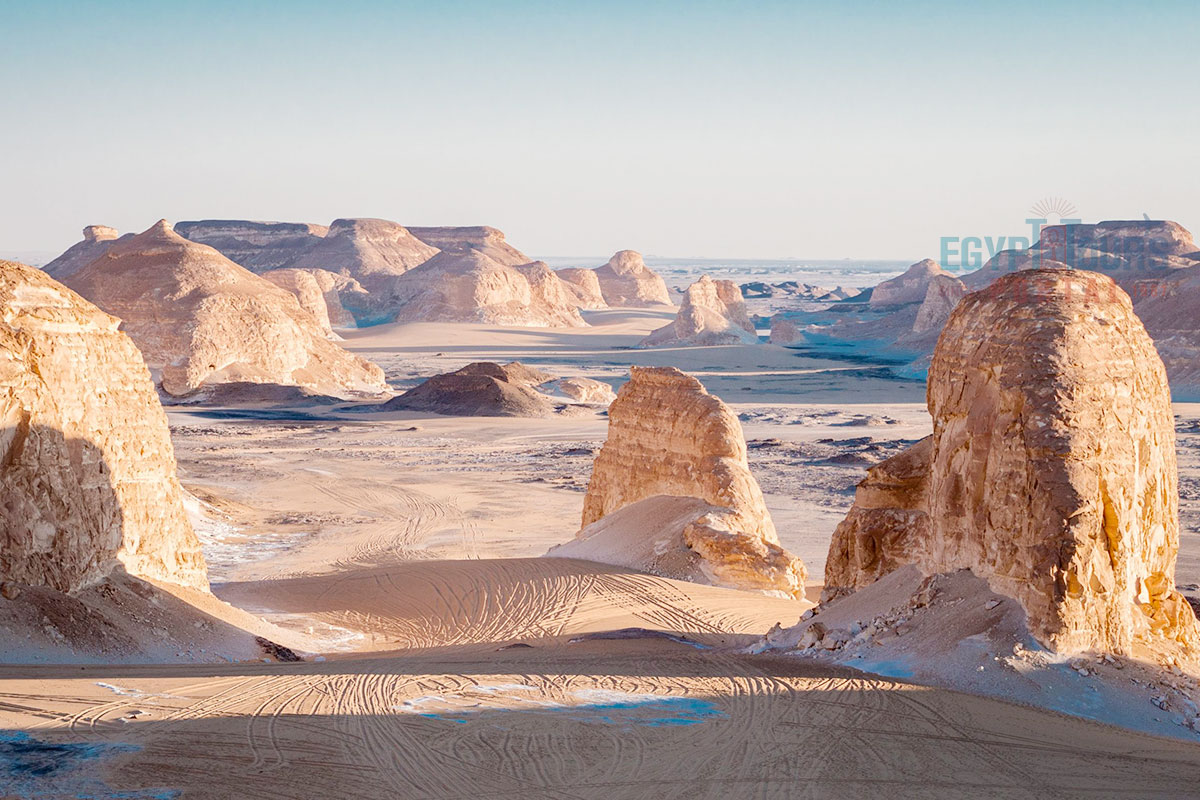
Over the vast landscape of 2000 km² in the oasis of Bahariya, there are several wonderful attractions that shed light on the profound beauty and the great natural wealth of this divine oasis. Within Bahariya are some of the most incredible attractions that come in many different shapes and colors, which offer the most unique tales and facts. The most famous attractions in Bahariya include:
The White Desert (Sahara el Beyda) is one of Egypt's most otherworldly landscapes, located around 45 km north of Farafra Oasis and roughly 100 km south of Bahariya Oasis in the Western Desert. This surreal desert is famous for its unique, chalky-white rock formations that have been sculpted by millennia of erosion by wind and sand, creating shapes that resemble giant mushrooms, icebergs, animals, and abstract figures.
These formations take on strange, ghostly shapes, which change color depending on the time of day, ranging from bright white in the noon sun to glowing orange or pink at sunset. The desert is a popular destination for overnight camping, allowing visitors to enjoy the serene landscape and the extraordinary night skies.
The lack of light pollution makes it one of the best spots in Egypt for stargazing. Like other parts of the Western Desert, the White Desert has an arid climate, with scorching days and cool nights, especially in winter.
Tourists should prepare accordingly. While the landscape appears barren, the White Desert is home to some desert wildlife, including foxes, gazelles, and a variety of bird species. Everyone typically explores the White Desert as part of a tour from Bahariya Oasis, which includes other nearby sites like the Black Desert and Crystal Mountain.
The Black Desert lies between Bahariya Oasis and the White Desert and offers a stark contrast to the pale rock formations of its neighbor. It gets its name from the dark, volcanic rock that covers the landscape, giving it a black, eerie appearance. The Black Desert is covered with small, black volcanic stones, remnants of long-extinct volcanoes dating back millions of years.
These stones are scattered across sandy plains, giving the ground a distinctive black hue. Some areas feature black-topped hills, which stand out dramatically against the yellowish sand. Visitors can climb some of the small volcanic hills for panoramic views of the surrounding landscape. The contrast between the black stones and the pale sand creates a unique and photogenic scene.
The Black Desert is often included in day trips or multi-day excursions with tours to the White Desert, as they are located relatively close to each other. While the Black Desert is not as famous as the White Desert, it offers an equally intriguing and dramatic landscape for those seeking a diverse desert experience.
The Golden Mummies Museum in Bahariya Oasis is one of the most amazing modern discoveries in the world of Egyptian archaeology, as it houses a collection of mummies discovered in the nearby Valley of the Golden Mummies, which is a significant archaeological find dating back to the Greco-Roman period. The mummies are famous for their lavishly gilded faces and the wealth of treasures found with them.
The Valley of the Golden Mummies was discovered in 1996 by Egyptian archaeologist Zahi Hawass. The site revealed hundreds of mummies dating back to the Greco-Roman period (332 BC to 395 AD). Many of the mummies are remarkably well-preserved, with gilded masks covering their faces, indicating that they belonged to wealthy individuals. The tombs also contained artifacts such as jewelry, pottery, and amulets, offering insight into the funerary practices of the time.
The museum showcases a selection of these mummies, along with other items found during excavations, such as intricate sarcophagi and everyday objects from the ancient period. The exhibits offer a glimpse into life and death in Egypt during the Greco-Roman era. The Golden Mummies Museum plays a vital role in educating visitors about the cultural exchange between ancient Egypt and the Greco-Roman world, illustrating the fusion of artistic styles and religious beliefs.
The Tomb of Bannentiu is a significant archaeological site in Bahariya Oasis, dating back to the 26th Dynasty of ancient Egypt (the 6th century BC), known for featuring a wide selection of magnificent and diverse artifacts. It was discovered in 1938 and is known for its well-preserved wall paintings and rich decorations. Bannentiu was a wealthy individual and a priest during the 26th Dynasty.
His tomb reflects his high status, with intricately painted walls depicting religious scenes, offerings to the gods, and symbols of the afterlife. The tomb’s colorful murals are a highlight for visitors as they feature images that show Bannentiu in the presence of gods such as Osiris, the god of the afterlife, and Anubis, the god of mummification. The paintings also include scenes of the deceased receiving offerings, which is a common theme in ancient Egyptian funerary art.
The tomb is small but elaborately constructed, with a burial chamber and antechamber. Its detailed craftsmanship offers insight into the religious practices and artistic achievements of the period. The Tomb of Bannentiu is located near other ancient sites in Bahariya Oasis, including the Tomb of Zed-Amun-ef-ankh, and it gives visitors a chance to explore Egypt's lesser-known pharaonic history.
The Temple of Ain El Muftella is a complex of ancient chapels located in Bahariya Oasis, which dates back to the 26th Dynasty and was used as a religious center during that period. The temple consists of several small chapels dedicated to various gods, including Amun and Horus. The chapels are well-preserved, with beautifully decorated walls that feature hieroglyphic inscriptions and depictions of the ancient Egyptian gods.
The temple was constructed around a natural spring, which was considered sacred and used for religious rituals. This water source (Ain) was crucial to the people living in the oasis and added to the temple's religious significance.
Ain El Muftella was an important religious site for the inhabitants of Bahariya Oasis, reflecting the oasis's role in the wider Egyptian empire during the 26th Dynasty. The site provides insights into how the ancient Egyptians viewed and utilized oases for both practical and spiritual purposes.
Bir Sigam is a natural hot spring located around 7 km from Bahariya Oasis, famous for being a popular stop for tourists seeking relaxation and therapeutic benefits after exploring the desert and ancient sites. The spring water at Bir Sigam is naturally heated by geothermal activity and is believed to have therapeutic properties. It is famous among travelers who come to bathe in the mineral-rich waters, which are said to help with ailments such as joint pain and skin conditions.
The water temperature can be quite hot, especially in the winter months when visitors find it most comfortable. The spring provides a welcome break from the cooler desert air at night or during the winter. Bir Sigam is surrounded by the rugged beauty of the desert, offering a serene and peaceful environment for visitors to unwind.
It's a great spot for travelers to relax after a day of exploring the nearby White or Black Deserts. The hot springs of Bir Sigam, along with other thermal springs in the region, are a reminder of the natural resources that have supported life in Egypt’s oases for centuries.
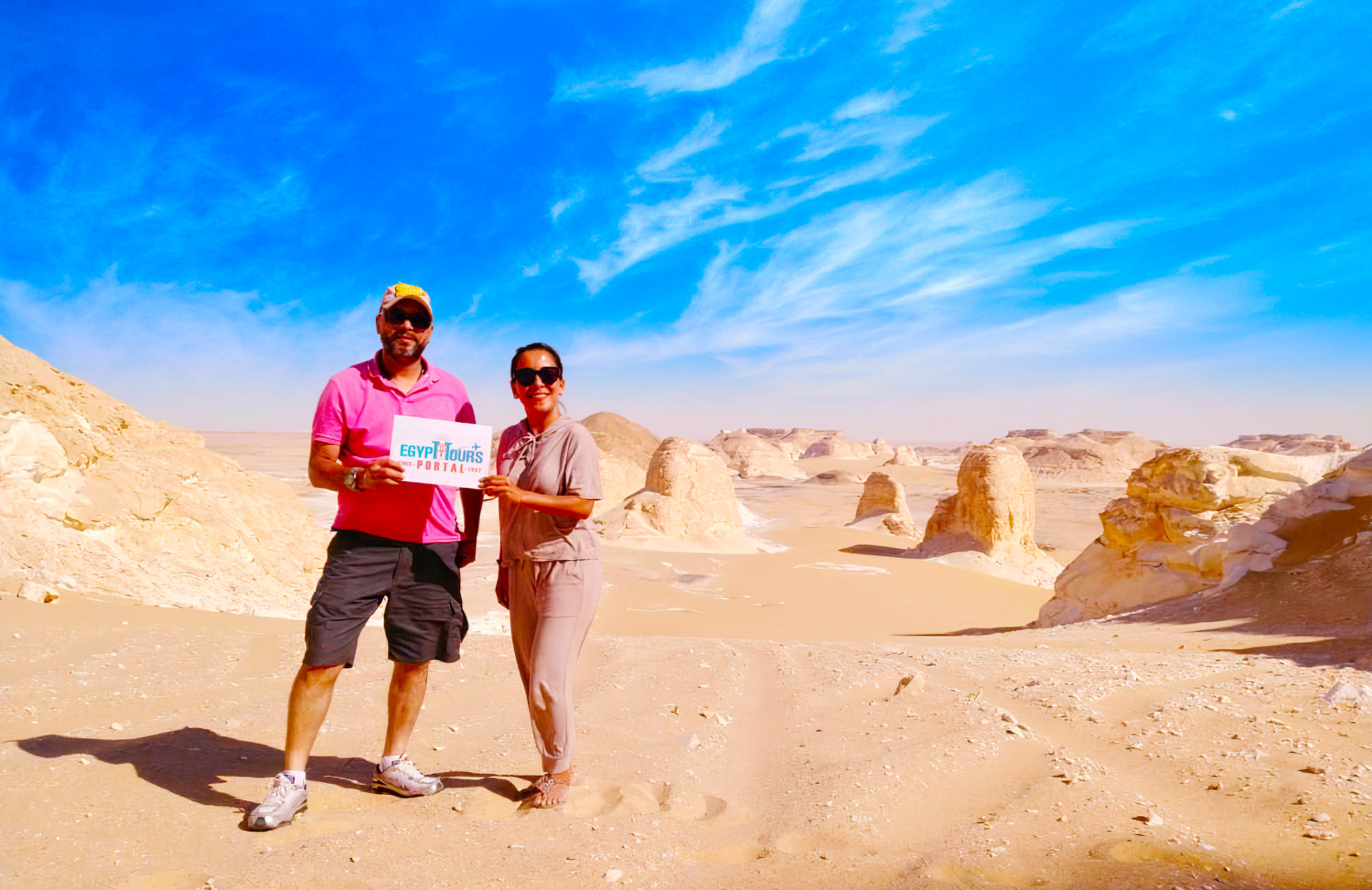
While Bahariya Oasis is a remote desert destination, it offers a variety of accommodations, from basic guesthouses to more comfortable lodges, catering to travelers seeking both adventure and relaxation. Here are some popular options:
Located near Bawiti (the main town of Bahariya), this hotel offers a traditional desert lodge experience. It provides clean, simple rooms with basic amenities and a peaceful garden. The staff often arranges tours to the White Desert and the Black Desert. A great choice for budget travelers.
Qasr El Bawity is one of the more upscale choices in Bahariya Oasis. It blends traditional architecture with modern comforts, offering a mix of standard rooms and suites. The property has a swimming pool, a restaurant, and offers various desert tours and activities.
Known for its naturally heated hot springs, this hotel is located near the heart of Bahariya. It’s popular with visitors seeking relaxation and wellness experiences. The rooms are basic but comfortable, and guests can enjoy the outdoor pool and hot spring baths after a day of exploring the desert.
A smaller, family-run hotel, Old Oasis is a more intimate and budget-friendly option for visitors. Located in the village of Bawiti, it offers traditional food, simple rooms, and personalized tours of the nearby desert attractions.
For those looking for a more adventurous experience, Desert Fox Camp offers a desert camping experience with basic amenities. It is perfect for travelers who want to connect with nature and enjoy the tranquility of the desert under the stars.

Bahariya Oasis is generally considered a safe destination for tourists, especially those traveling with tour operators or guides. The oasis is located in the Western Desert, which is remote and sparsely populated. It's advisable to check the latest travel advisories from your government or the Egyptian Ministry of Tourism, especially if planning to travel independently. If you plan to explore the surrounding desert, it's crucial to go with an experienced guide who knows the terrain.
The desert is vast and can be dangerous if you're unfamiliar with it. Always carry plenty of water, wear sun protection, and avoid traveling during the hottest part of the day. Bahariya has limited medical facilities, so it's a good idea to carry basic medical supplies. Drink bottled or purified water and be cautious when trying unfamiliar food. While malaria is not a risk, it's still recommended to use mosquito repellent, especially near any oases. Crime rates are low in the oasis, and locals are generally hospitable.
However, it's always a good idea to keep your belongings safe and be aware of your surroundings, particularly in busier tourist areas like Bawiti. Although wildlife in the area is limited, always be cautious around desert animals and insects. Some snakes and scorpions can be found in the desert, so avoid handling wildlife and wear appropriate footwear when walking in the desert.
Make your time in Egypt worthy of remembering by diving into the natural beauty of Egypt that knows no bounds. Discover all the incredible destinations of this majestic location and explore some of its incomparable artifacts through our miraculous Egypt tour and Nile River cruise.
Private 4 Days Cairo Tour Packages 4 days Cairo Egypt tour package will offer a bles...
Tour Location: Cairo – Giza...
Stunning 5 Days Cairo and Alexandria Tour Package 5 days Cairo and Alexandria tour p...
Tour Location: Cairo/Giza/Alexandria...
Exceptional 6 Days Cairo, Luxor & Aswan Tour Package 6 days Cairo, Luxor & A...
Tour Location: Cairo/Giza/Aswan/Luxor...
Amazing 7 Days Cairo and Hurghada Holiday 7 Days Cairo & Hurghada holiday will e...
Tour Location: Cairo – Giza – Hurgh...
The Bahariya Oasis span over 2000 sq. km the Bahariya Oasis is a lush haven set in the middle of the wild and vast desert and surrounded by black hills made of quartz.
The story of the Valley of the Golden Mummies in the Bahariya oasis discovery was by mere chance that took place in 1996 when an Antiquities guard of the Temple of Alexander the Great was crossing the desert Sahara on his donkey and suddenly the leg of the donkey buckled and fell which led to a small hole in the desert floor where the donkey had fallen begin discovered leading to a room filled with mummies.
Bahariya Oasis offers a unique and captivating experience for travelers seeking adventure, natural beauty, and a taste of traditional Egyptian culture. The oasis boasts breathtaking scenery, including sand dunes, mountains, and palm oases, plus historical landmarks like the Black Mountain, the White Desert, and the Valley of the Whales, a UNESCO World Heritage Site.
Everyone will get to relax and rejuvenate in the natural hot springs that dot the oasis, all while experiencing the hospitality and way of life of the local Bedouin people. In there, everyone will get to enjoy activities like camel riding, sandboarding, and desert safaris.
The population of Bahariya Oasis is relatively small, with an estimated around 20,000 people. The majority of the residents are Bedouins who have lived in the area for generations.
The entire country of Egypt deserve to be explored with its every heavenly detail but there are places that must be seen before any other such as the breathtaking Hurghada's red sea, The wonders of Cairo the pyramids of Giza, the great sphinx, the Egyptian Museum, Khan El Khalili Bazaar, the wonders of Luxor like Valley of the Kings, Karnak & Hatshepsut temple and the wonders of Aswan such as Abu Simbel temples, Philea temple, Unfinished obelisk and The Wonders of Alexandria like Qaitbat Citadel, Pompey's Pillar and Alexandria Library. Read more about the best places to visit in Egypt.
If you want to apply for a Visa On Arrival that lasts for 30 days then you should be one of the eligible countries, have a valid passport with at least 6 months remaining and pay 25$ USD in cash, as for the E-Visa for 30 day you should have a valid passport for at least 8 months, complete the online application, pay the e-visa fee then print the e-visa to later be presented to the airport border guard. You could also be one of the lucky ones who can obtain a free visa for 90 days. Read more about Egypt travel visa.
Egypt has a variety of delicious cuisines but we recommend “Ful & Ta’meya (Fava Beans and Falafel)”, Mulukhiya, “Koshary”, a traditional Egyptian pasta dish, and Kebab & Kofta, the Egyptian traditional meat dish.
The best time to travel to Egypt is during the winter from September to April as the climate becomes a little tropical accompanied by a magical atmosphere of warm weather with a winter breeze. You will be notified in the week of your trip if the Climate is unsafe and if any changes have been made.
You should pack everything you could ever need in a small bag so you could move easily between your destinations.
We have been creating the finest vacations for more than 20 years around the most majestic destinations in Egypt. Our staff consists of the best operators, guides and drivers who dedicate all of their time & effort to make you have the perfect vacation. All of our tours are customized by Travel, Financial & Time consultants to fit your every possible need during your vacation. It doesn't go without saying that your safety and comfort are our main priority and all of our resources will be directed to provide the finest atmosphere until you return home.
You will feel safe in Egypt as the current atmosphere of the country is quite peaceful after the government took powerful measures like restructuring the entire tourist police to include all the important and tourist attractions in Egypt. Read more about is it safe to travel to Egypt.
Wear whatever feels right and comfortable. It is advised to wear something light and comfortable footwear like a closed-toe shoe to sustain the terrain of Egypt. Put on sun block during your time in Egypt in the summer to protect yourself from the sun.
The best activity is by far boarding a Nile Cruise between Luxor and Aswan or Vise Versa. Witness the beauty of Egypt from a hot balloon or a plane and try all the delicious Egyptian cuisines and drinks plus shopping in old Cairo. Explore the allure and wonders of the red sea in the magical city resorts of Egypt like Hurghada and many more by diving and snorkeling in the marine life or Hurghada. Behold the mesmerizing western desert by a safari trip under the heavenly Egyptian skies.
There are a lot of public holidays in Egypt too many to count either religious or nation, the most important festivals are the holy month of Ramadan which ends with Eid Al Fitr, Christmas and new years eve. Read more about festivals & publich holidays in Egypt.
Egypt is considered to be one of the most liberal Islamic countries but it has become a little bit conservative in the last couple of decades so it is advised to avoid showing your chest, shoulders or legs below the knees.
Arabic is the official language and Most Egyptians, who live in the cities, speak or understand English or at least some English words or phrases. Fewer Egyptians can speak French, Italian, Spanish, and German. Professional tour guides, who work in the tourism sector, are equipped to handle visitors who cannot speak Arabic and they will speak enough English and other languages to fulfill the needs of all our clients.
The fastest way is a car, of course, a taxi. If you are in Cairo ride a white taxi to move faster or you could board the fastest way of transportation in Egypt metro if the roads are in rush hour.
The temperature in Egypt ranges from 37c to 14 c. Summer in Egypt is somehow hot but sometimes it becomes cold at night and winter is cool and mild. The average of low temperatures vary from 9.5 °C in the wintertime to 23 °C in the summertime and the average high temperatures vary from 17 °C in the wintertime to 32 °C in the summertime. The temperature is moderate all along the coasts.
It is the home of everything a traveler might be looking for from amazing historical sites dating to more than 4000 years to enchanting city resorts & beaches. You will live the vacation you deserve as Egypt has everything you could possibly imagine.









